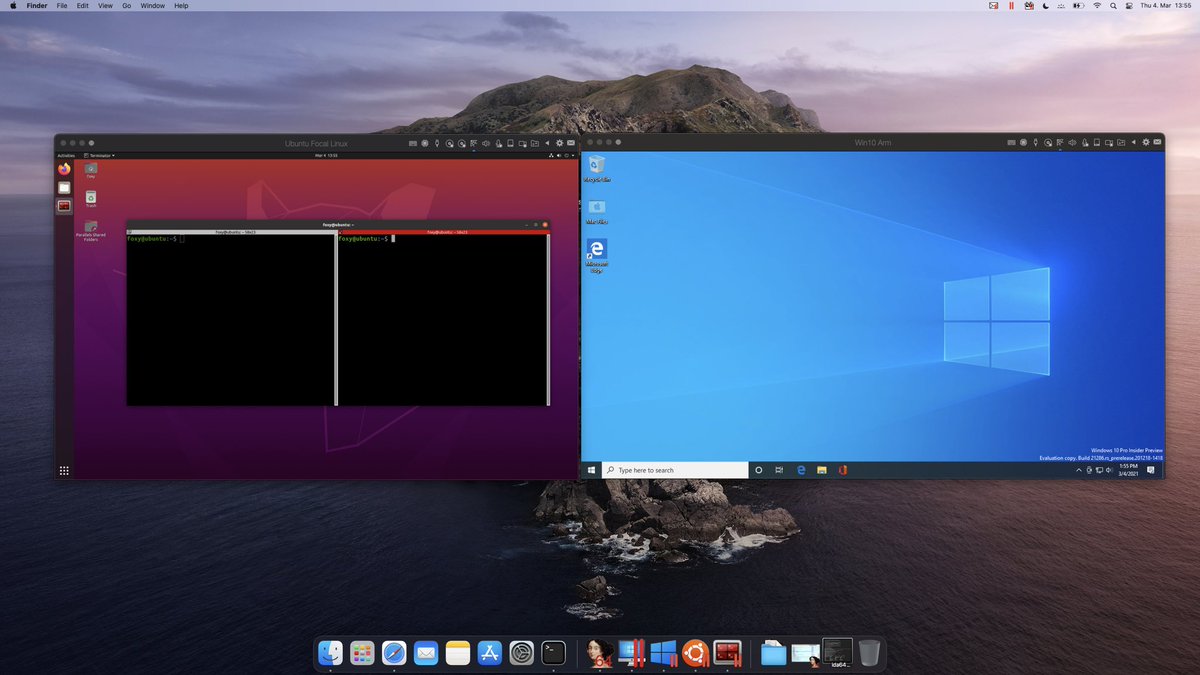

- #PARALLELS OR FUSION FOR MAC INSTALL#
- #PARALLELS OR FUSION FOR MAC SERIAL#
- #PARALLELS OR FUSION FOR MAC DRIVERS#
- #PARALLELS OR FUSION FOR MAC SOFTWARE#
- #PARALLELS OR FUSION FOR MAC TRIAL#
Note that the default in each is to use one core of a dual-core CPU since both now offer multiprocessor support, you may be tempted to set them to use multiple cores. I installed new copies of Windows 7 (using the prerelease RC1 version, which should remain usable until August 2010) and Ubuntu 9.10 under both Fusion and Parallels. Parallels asks for user name only – after installation, you’re logged in with no password, a very insecure way to go. One note: Fusion asks you to provide a log-in name and password, and it then creates a Windows account using this information.
#PARALLELS OR FUSION FOR MAC SERIAL#
If installing Windows, both Fusion and Parallels offer a simple installation mode – just type in your Windows serial number, and the program will take care of the rest of the details.
#PARALLELS OR FUSION FOR MAC INSTALL#

#PARALLELS OR FUSION FOR MAC DRIVERS#
If there’s a Boot Camp partition with Windows installed, both (but not the free VirtualBox) will recognize it and allow it to run in a virtual session after installing some virtualization-specific drivers and tools.Lots of Ways to Get Up and Runningīoth programs offer users a similar variety of ways to setup Windows (or other PC operating systems) on their Macs: Setting up a new virtual machine using VMware Fusion 3.0. New Crystal Mode view and Mac Look option.300% performance boost compared to the previous version 4.Parallels promises that version 5 offers:.better integration with the Mac desktop.runs as a 64-bit application and supports Snow Leopard’s 64-bit kernel.Both offer compatibility with Mac OS X 10.6 Snow Leopard and Windows 7. On paper, both of these are relatively minor upgrades from the previous versions.
#PARALLELS OR FUSION FOR MAC TRIAL#
Downloadable free trial versions of both are available. VMware released Fusion 3.0 (US$80) first, just a couple of days after Microsoft officially released Windows 7, while the new version of Parallels (also US$80) came out a few weeks later. I upgraded my aluminum MacBook’s RAM from 2 GB to 4 GB in order to run these programs and replaced the stock 160 GB hard drive with a 500 GB model. (Nicely, both Fusion and Parallels default to creating expandable virtual drives – Windows may think it’s got a 30 GB hard drive, but if you’ve currently got 16 GB of files installed, the virtual drive will only take up 16 GB of space, not 30). As well, you’ll need enough free hard drive space for virtual hard drives for each operating system you install. Users should note that any of these virtualization programs make high demands on their computer – you’ll need enough RAM to provide an adequate amount of memory for both the guest operating system (Windows or another PC OS) and the host operating system (Mac OS X), since both are running at the same time. While lacking some of the features of the VMware and Parallels products, VirtualBox has been quietly improving with each release and has one big advantage – it’s free. While this article will be focussing on VMware Fusion and Parallels Desktop, users interested in virtualizing should also pay attention to VirtualBox. With the new Fusion 3.0 and Parallels Desktop 5.0, each company has made an effort to move in on the other product’s strengths while improving the 3D performance that has limited the appeal of both products to gamers and other users needing strong 3D graphics capabilities.
#PARALLELS OR FUSION FOR MAC SOFTWARE#
While Parallels Desktop was the first virtualization software for Intel Macs, VMware claims that Fusion now has the most users. While both have offered relatively straightforward ways to run Windows and other PC operating systems on an Intel Mac with pretty good performance in earlier incarnations, Fusion offered higher-end features – 64-bit and multiprocessor support – while Parallels gave the user better integration with the Mac user interface. The October release of Microsoft’s Windows 7 brought a flurry of activity on the Mac2Windows front – new versions of both of the major virtualization programs for the Mac platform: VMware Fusion and Parallels Desktop.


 0 kommentar(er)
0 kommentar(er)
